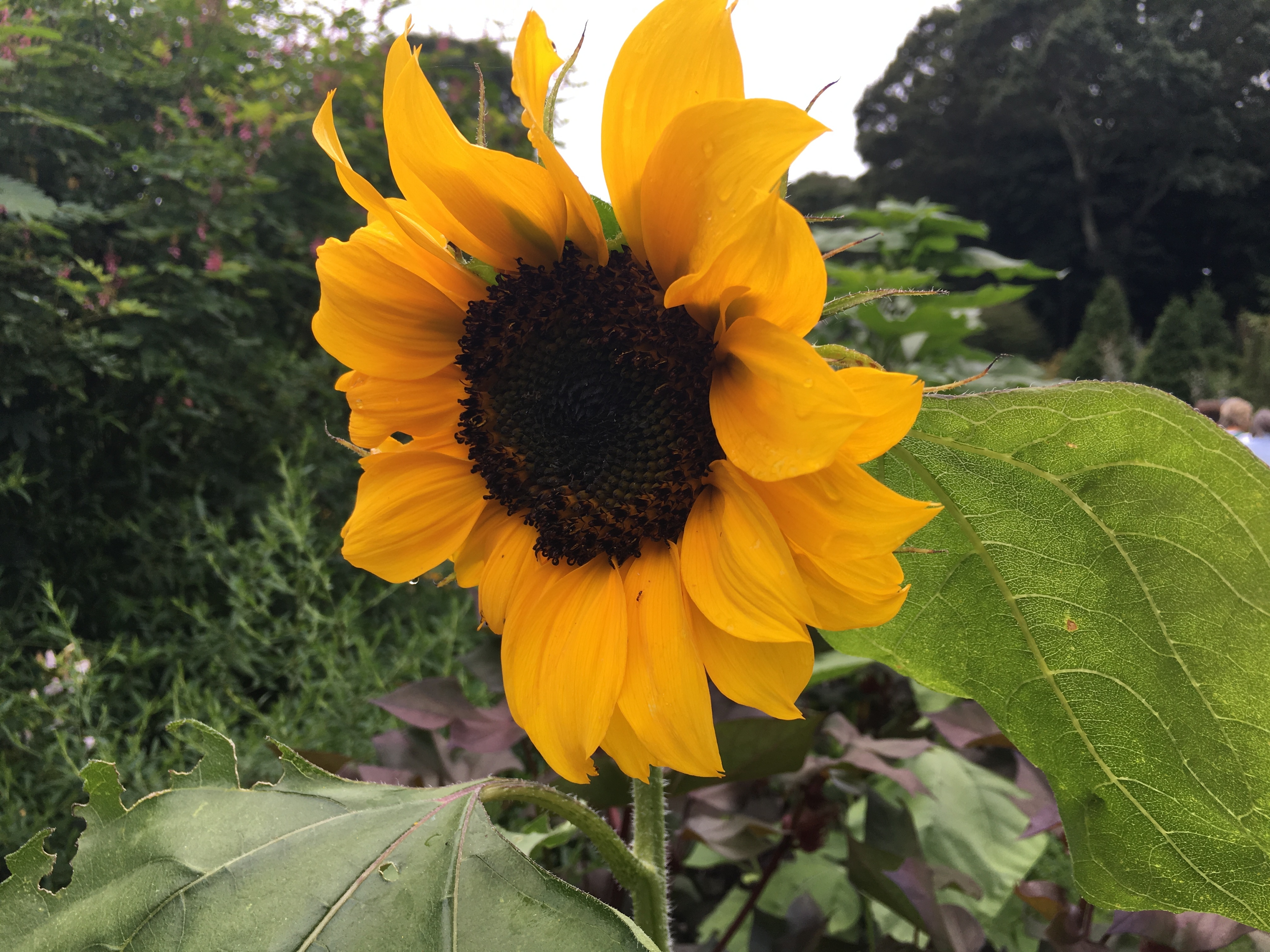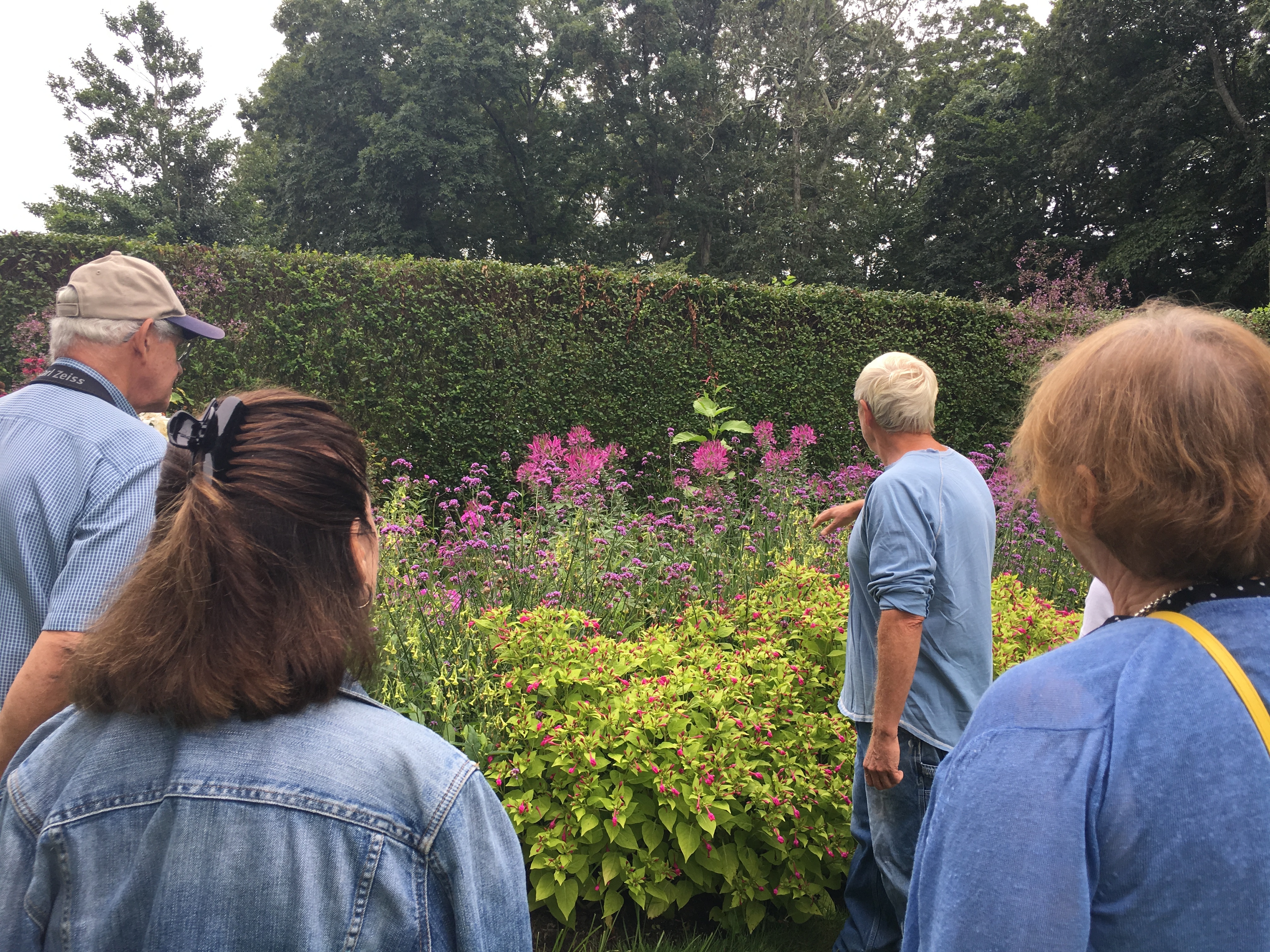Blog
A Note From Rick | Pollinators
photo by Jeff Heatley
By Rick Bogusch
It's the Height of the Summer...Come Visit!
Bright colors and luscious scents abound, attracting a wide variety of pollinating insects, including butterflies. I’ve noticed quite a few Monarch butterflies this year - certainly more than in years past - visiting the areas where swamp milkweed is planted. At least I think they’re Monarchs, but they could be Viceroys which are known as “the mimic.” How can you tell? They look very similar to the Monarch except that they are slightly smaller and have a black line across the hind wing. They also have a very erratic flight, contrasting with the Monarch’s more float-like, “flap, flap, glide” pattern. We’ll learn more about these and other pollinating insects when we host Rich Kelly from the Long Island Botanical Society on August 12 for a walk focused on pollinators and the plants that attract them. I hope to see you!
I don’t think there is anything more cooling in the heat of the summer than the color green - and ferns offer so many different shades. One of my favorites is the pewter-green of Athyrium ‘Branford Beauty,’ a hybrid between the native lady fern and the Japanese painted fern. This plant grows in a clump form and thrives easily in light or dense shade, combining well with both bright golden greens and deep dark greens.
Along the brick path, you’ll find several stately Asiatic lilies. The glorious cream and yellow trumpet lily, ‘Ice Follies,’ is nearly out-shined by ’Anastasia’ with its huge pink and white blooms. Both are extremely fragrant, offering show-stopping color and scent for the entire border area.
For those whose property calls for shade-loving plants, explore the area near our stone driveway. Textures and leaf color are often more common than flowers, however Hypericum frondosum,
a native St. John’s Wort, is a showstopper with beautiful yellow flowers right now. Nearby, is the rich purple color of Platycodon or Japanese bellflower, a cousin of the Campanulas. An herbaceous perennial native to China, its buds swell like a balloon before exploding into brilliant purple bells.
A little further along and closer to the Community Gardens you’ll see another outstanding plant, Amsonia hubrichtii, or Hubricht’s bluestar. Come autumn, the beautiful blue-green foliage will change to brilliant yellow-orange, a real delight in the golden light of the fall season.
Speaking of our Community gardens, you must see the 12 foot tall sunflowers, towering above several plots! Not to mention the artichokes planted by another gardener, as well as the many varieties of kale, cherry tomatoes and peppers nearing harvest -
It’s been a good year for growing food!



Garden walk with Rick Bogusch
What should you be doing now?
- If you are growing vegetables this year, now is a good time to sow second seedings of crops like green beans, carrots, beets, and summer squash. You can also try varieties of what is called summer lettuce, which unlike most lettuce, grows relatively well in the heat of summer. This year, I’m trying Muir and Concept from Johnny’s Seeds. It is also time to start transplants of fall “cole” crops like cauliflower, cabbage and broccoli, as well as fall crops like bulb fennel and escarole.
- If you are finding beetles in your vegetable garden, they can be a big problem. There are a couple of species, and they can devastate a row of beans in no time at all. When you see them or their larvae on the undersides of leaves, spray with Pyganic, an OMRI-rated (organic) pyrethrin product, which can be used on many outdoor pests.
- Now is also time to start thinking of boosting areas lacking color. I’ve been impressed by anise hyssop, Agastache foeniculum. This honey plant is strongly anise-scented and delightful for tea or as a culinary seasoning. I grew it from seed last year and it bloomed for months in the herb garden’s culinary bed. It is a self-sower and seedlings need to be aggressively weeded in spring, but its hardiness and long blooming period make it a good candidate for the perennial border.
- Native bee balm, Monarda fistolusa, blooming in the herb garden’s medicinal bed, along with native coneflower, Echinacea purpurea, are also good perennials to consider. We grew a new variety of coneflower from seed last year called Pow Wow Wild Berry, pictured above, and I’ve enjoyed its prolific blooms and vibrant color this summer. The flowers are more vivid than is typical of the species, and it is a more compact plant. Native American tribes used the bee balm, pictured below, to fight colds and bronchial infections, and coneflower is famous for its ability to alleviate symptoms of the flu.

